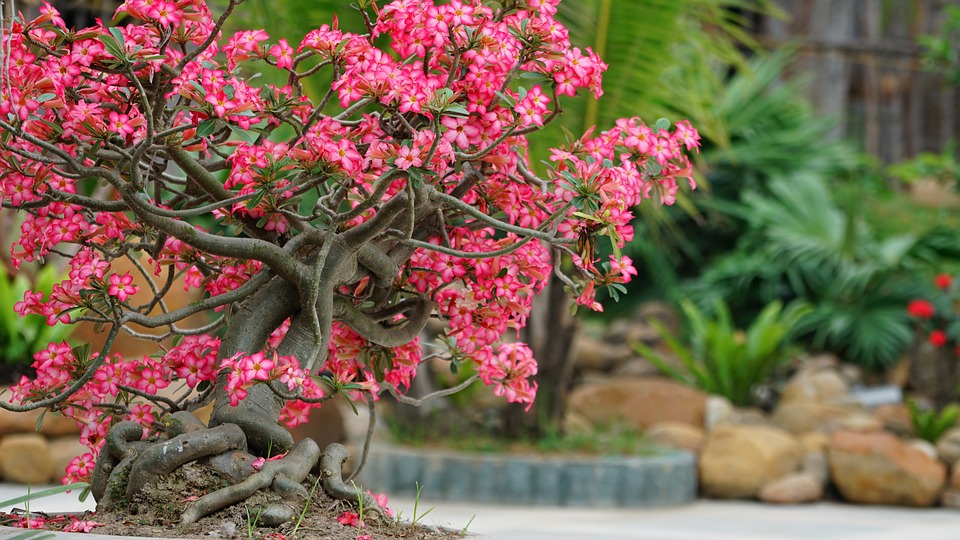Feng Shui, the traditional Chinese concept associated with harmonizing an individual’s house also provides great garden design principles. These principles can help to attract nourishing energy in your garden and make it a peaceful and serene place.
You want a Zen garden, don’t you? Today, we bring you some of the fantastic tips for a Feng Shui inspired garden!
Feng Shui Principles:
#1. The Five Elements

If you have been incorporating Feng Shui in your home, you must have heard of the five elements of Feng Shui. According to the Chinese geomancy, the world is divided into five elements: wood, fire, earth, metal and water and these elements represent forces essential to human life.
When combined, the five elements create a harmonious and warm atmosphere and this process is called the nourishing cycle of elements. If you integrate these natural elements in your garden, it will symbolise that you are honouring nature and inviting pure Feng Shui energy in your space.
These five elements can be added in your garden by the following plants and objects:
- Wood: wooden bowers, benches
- Fire: lanterns, lights, fire pits
- Earth: terracotta pots, soil, rocks, clay flowerpots
- Metal: wind chimes, arbours, planters
- Water: fountains, birdbaths
Each of these elements carries a special meaning.
- Wood: Brings vitality and growth
- Fire: Represents inspiration and passion
- Earth: Establishes stability and protection
- Metal: Symbolises simplicity and integrity
- Water: Brings prosperity and abundance
However, one thing that you should keep in mind: always put the right elements together! Otherwise, the elements could oppose to each other and bring disequilibrium to your garden. This is known as the controlling cycle of the elements. For instance, an excess of the water element can douse the fire element.
#2. Auspicious Colours

Colours play a crucial role in the ancient Chinese practice and allow ‘chi’ to flow freely.
What is chi? Chi refers to the energy of life which consists of an equilibrium between Yin and Yang.
Different colours have different meanings and carry different energy levels. Like cool colours have a calming effect while warm colours increase the level of energy.
Additionally, colors representing the five elements of Feng Shui are essential aspects to be considered for a Zen garden. In Feng Shui, the yin colours are associated with earth, metal, and water elements, while the yang energy represents the elements of wood and fire. Below you will find the colours related to the different natural elements:
- Wood: Green, Brown
- Fire: Red, Orange
- Earth: Yellow
- Metal: White, Silver, Beige
- Water: Blue, Black
#3. Bagua as Guide

Huh, Bagua? What’s that?
The Bagua is a Feng Shui energy map and is one of the most powerful tools that determine your environment’s energy field. It literally means “eight areas” in Chinese and is octagon-shaped. It consists of nine important sectors which are:
- Career
- Knowledge
- Family
- Wealth
- Fame
- Relationships
- Children
- Helpful People
- T’ai Chi (Health)
The location of certain elements and colours of your garden must be based on these nine aspects. If one sector is missing, it means that you will have difficulties in your life’s corresponding field. For instance, if you missed the ‘wealth’ element in your garden, you will either start losing money or experience extreme bad luck in your life.
Below you will find some amazing tips on how to integrate these nine sectors in your garden:
- Career – Here, the landscape design of the garden should be nearest to the house. Fountains and metallic garden décor will promote your professional life.
- Knowledge – Colours matching the Earth elements should be chosen and placed in the left side of your yard. A quiet sitting pace with a wooden or stone bench can be added.
- Family – Positioned on the center’s opposite side, this area should include water and wood features like a water fountain or wooden benches.
- Wealth – Includes a combination of wood and water elements. Bright -coloured elements such as green and purple plants are highly recommended.
- Fame – The perfect place for a fire element, which can include vivid red flowers.
- Relationships – Metal decors should be positioned on the right side of your garden. A patio where friends can be invited should be also considered.
- Children – This represents the area where colorful flowers and vibrant and playful items such as wind chimes should be placed.
- Helpful People – Located at the back corner of the garden, it should consist of earthly elements.
- T’ai Chi (Health) – Yellow-coloured materials should be positioned in the center to bring good health and positive energy.
Will you follow these principles and incorporate them into your garden? Please share your comments and don’t forget to come back for part 2 to learn more about Feng Shui garden principles!



